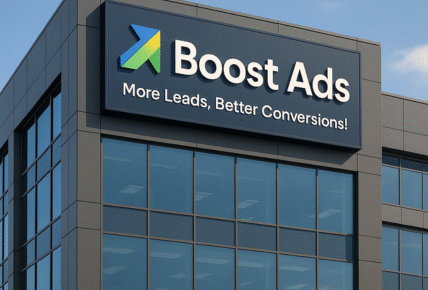When working with an SEO Company Toronto businesses trust, transparency is key. Clients must understand how their investment is performing. One of the most effective ways to build that trust is by sharing clear, consistent, and relevant metrics. This not only proves ROI but also guides strategic decisions. Below are the essential metrics that every SEO agency in Toronto should openly share with their clients, along with steps to track and analyze them effectively.
Image source: pexels.com
1. Organic Traffic
Why It Matters
Organic traffic is the lifeblood of SEO. It measures how many visitors come to your site from unpaid search engine results. A steady increase in organic traffic usually indicates effective keyword targeting, quality content, and proper on-site SEO.
How to Execute
- Use Google Analytics (GA4) to monitor users and sessions originating from organic search.
- Segment by landing page to see which content is attracting visitors.
- Use filters to exclude branded searches for a more accurate assessment of SEO impact.
Example
If you’re targeting the keyword “custom kitchen cabinets Toronto,” organic traffic to blog posts or landing pages built around this term should increase over time. Your SEO company should report on this growth monthly.
2. Keyword Rankings
Why It Matters
Keyword rankings show how your website positions for specific search terms in Google. Higher rankings usually mean more visibility, more traffic, and more conversions—especially on page one.
How to Execute
- Use tools like Ahrefs, SEMrush, or Google Search Console to monitor rankings.
- Create a keyword tracking sheet categorized by campaign goals (e.g., local vs. national).
- Analyze not just rankings but also search volume and click-through rates (CTR).
Example
If a client’s service page is optimized for “emergency plumbing Toronto” and it moves from position 20 to 4 in Google results, this change should be highlighted in your reporting.
3. Conversion Rate from Organic Traffic
Why It Matters
Getting traffic is just the first step. The ultimate goal is to convert visitors into leads, calls, or customers. A high conversion rate indicates that your site is effectively engaging visitors and meeting their needs.
How to Execute
- Set up conversion goals in GA4 (e.g., form submissions, phone calls, purchases).
- Attribute those conversions specifically to organic traffic.
- Track conversion rate trends over time and analyze which pages or keywords contribute most.
Example
If your SEO company optimized a landing page for “dentist in downtown Toronto,” and that page now brings in 15 form fills per month (up from 3), that’s a clear metric of SEO success.
4. Bounce Rate and Dwell Time
Why It Matters
Bounce rate and dwell time reveal how users interact with your site. A high bounce rate or short dwell time may indicate poor content relevance or user experience issues, even if traffic is high.
How to Execute
- In GA4, track bounce rate by page and session duration.
- Use heatmap tools like Hotjar or Crazy Egg to observe on-page behavior.
- Optimize underperforming pages by improving content structure, CTAs, or page speed.
Example
If visitors land on a blog post about “how to apply for a Canadian visa” and leave within 10 seconds, it might suggest the content isn’t matching user intent. Rewriting or expanding the content could lower bounce rates.
5. Backlink Profile and Referring Domains
Why It Matters
Link building from authoritative sites boosts your website’s credibility and rankings. A diverse backlink profile with many referring domains is a strong SEO signal.
How to Execute
- Use Ahrefs or Majestic SEO to monitor backlinks and referring domains.
- Check for toxic links and disavow if necessary using Google Search Console.
- Track anchor text diversity and link velocity over time.
Example
A law firm might get featured in a local Toronto news outlet with a backlink to their homepage. Your SEO company should report this and explain how it improves domain authority.
6. Page Load Speed and Core Web Vitals
Why It Matters
Google includes page experience as a ranking factor. A slow or glitchy site can hurt rankings and user satisfaction, directly affecting bounce rate and conversions.
How to Execute
- Use Google PageSpeed Insights and Lighthouse to test performance.
- Focus on improving Core Web Vitals: Largest Contentful Paint (LCP), First Input Delay (FID), and Cumulative Layout Shift (CLS).
- Regularly audit key landing pages and apply fixes like image compression, lazy loading, and code minification.
Example
If a real estate website’s property listing pages take over 5 seconds to load, the SEO company should identify the root cause (e.g., unoptimized images) and implement changes that bring the load time under 2 seconds.
7. Local SEO Metrics (for Local Businesses)
Why It Matters
For Toronto-based businesses, local visibility is critical. Metrics like Google Business Profile (GBP) views, direction requests, and local pack rankings are essential.
How to Execute
- Monitor Google Business Profile Insights to track local actions.
- Use tools like BrightLocal or Whitespark to measure local pack performance.
- Optimize NAP (name, address, phone) consistency and build citations on local directories.
Example
If you’re a café in downtown Toronto and your Google listing gets 1,000 more map views and 200 additional phone calls after SEO optimization, that’s a tangible result worth sharing.
Final Thoughts
A transparent and data-driven SEO agency Toronto clients can trust should regularly provide these metrics in easy-to-understand dashboards or monthly reports. Each metric ties into a broader strategy—whether it’s increasing visibility, improving user experience, or boosting revenue. By tracking and explaining these KPIs with clarity, SEO companies empower their clients to make informed decisions and invest confidently in long-term digital growth.



